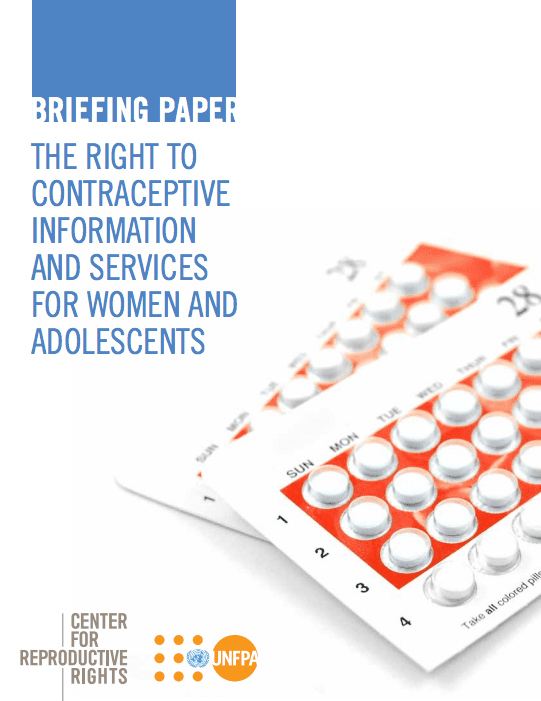Contraceptive Coverage in the Federal Employees Health Benefits Program
In 1998, Congress voted to ensure that all Federal Employees Health Benefit Program (FEHBP) participants have access to comprehensive contraceptive coverage in the FY 1999 Treasury, Postal Service and General Government Appropriations Bill. Previously, FEHBP did not provide such coverage for contraception, despite its inclusion of coverage for other prescription drugs and devices. Language included in the appropriations bill ensures that federal employees participating in FEHBP have insurance coverage of FDA-approved prescription contraceptives and related services. Today, oral contraceptives, diaphragms, Norplant, Depo Provera, cervical caps, emergency contraception, IUDs, and other methods are all covered under the program.
The provision guaranteeing contraceptive coverage has been subject to debate in ensuing annual Treasury Postal Appropriation Bills. In President Bush’s first budget request to Congress, he sought to remove the legislative language, but his request was denied. Since then, a similar request has not been made and the program remains in place.
Americans Support Contraceptive Equity, Access to Comprehensive Contraceptive Coverage
,
- Eight out of 10 privately insured adults support contraceptive equity in health insurance, even if it means increased insurance costs.
- Seven out of 10 privately insured adults believe health insurers should be required to cover the full range of contraceptives.
Medical Groups Support Access to Contraceptive Equity
Leading medical groups, such as the American Medical Association, the American College of Obstetricians and Gynecologists, the American Medical Women’s Association, the American Society for Reproductive Medicine, and the Society for Adolescent Medicine, all support access to reliable contraception as a part of basic health care.
Contraceptive Coverage Is an Important Public Health Investment
Providing health insurance coverage for contraceptives is a good investment for the federal government.
In 1998, the Congressional Budget Office determined that improved coverage for federal employees would not cost any additional money. In fact, by investing in contraceptive coverage, the federal government will most likely save money. Contraceptive coverage can help federal employees avert unintended pregnancies, reducing government costs for health benefits such as prenatal and maternity care.
This Provision Is About Contraceptive Coverage, Not Abortion Services
Some anti-choice members make no distinction between contraceptives — which prevent pregnancies — and abortions — which terminate pregnancies. They claim the contraceptive coverage provision will require FEHBP coverage of abortion services. This is simply not true.
Congress has repeatedly voted to exclude abortion coverage under FEHBP. Indeed, each year a specific provision is included in the Treasury Postal Appropriations Bill prohibiting coverage of abortion services.
Moreover, the contraceptive coverage provision explicitly states, “[n]othing in this section shall be construed to require coverage of abortion or abortion-related services.”
The Current “Conscience Clause” Exemption Is Sufficient
In 1998, Congress specifically exempted from the contraceptive coverage provision five existing religiously-based plans that participate in FEHBP. According to the Office of Personnel Management (OPM), which is charged with implementing and monitoring of the contraceptive coverage provision, no plan has terminated participation in FEHBP because of the contraceptive coverage provision nor have additional plans requested exemption. Further, OPM is not aware of any physician who has requested exemption from the provision. This is strong evidence that the provision adequately addresses the needs of plans and individuals.
Contraceptive Coverage Is Important to Federal Workers and Their Families
FEHBP provides coverage for nine million federal employees, of which 1.2 million are women of childbearing age. Contraception is basic health care for women, yet insurance plans routinely exclude this coverage.
Before Congress took action on contraceptive equity in FEHBP:
Contraceptive Equity Addresses Women’s Health Care Needs
Women of reproductive age spend 68% more than men on out-of-pocket health care costs, largely on reproductive health care services. Contraceptive equity in the FEHBP can help bridge that spending gap for women covered by the Program.
Two-thirds of U.S. women of childbearing age rely on private, employer-related plans for their health coverage, yet 49% of large group plans do not routinely cover any contraceptive method.
Today, because Congress took action, federal employees have access to much needed comprehensive contraceptive coverage. Federal employees need and deserve contraceptive equity.
<

